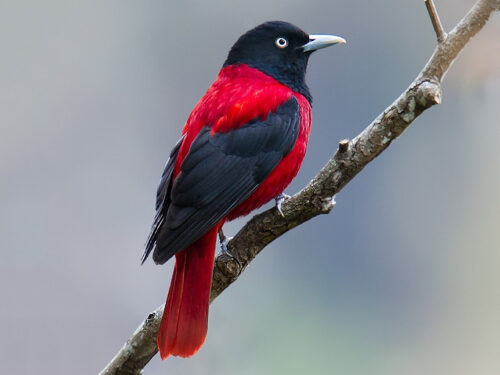
Immerse yourself in the mesmerizing world of the Maroon Oriole, a breathtaking bird species found in the dense forests of Southeast Asia.
With its deep maroon plumage, complemented by contrasting black and yellow wings, this elusive bird captivates the hearts of nature enthusiasts.
In this article, we delve into the enchanting features of Maroon Orioles, their preferred habitats, behavior, diet, conservation status, and the significance of protecting their delicate ecosystems.
Get ready to embark on a visual journey filled with stunning visuals and captivating videos.
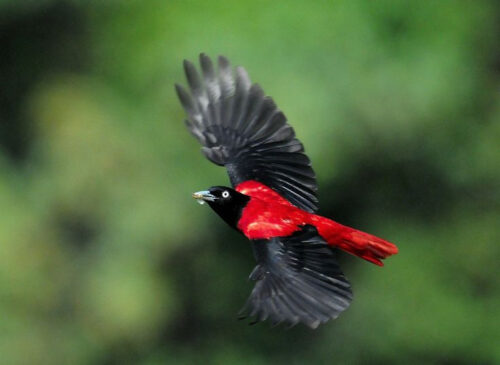
- Habitat and Distribution: Forest Dwellers of Southeast Asia
Maroon Orioles inhabit a range of habitats, from primary forests and forest edges to secondary growth forests and plantations.
Their distribution spans from Myanmar to southern China, encompassing the Malay Peninsula and the islands of Sumatra and Borneo.
While not considered migratory, their movements can be influenced by factors such as food availability and breeding cycles.
Exploring their preferred habitats allows us to appreciate the diverse ecosystems they call home.
- Striking Appearance: Deep Maroon Plumage and Exquisite Wing Patterns
With a medium-sized body measuring around 22 centimeters in length and a wingspan of approximately 32 centimeters, Maroon Orioles exhibit remarkable beauty.
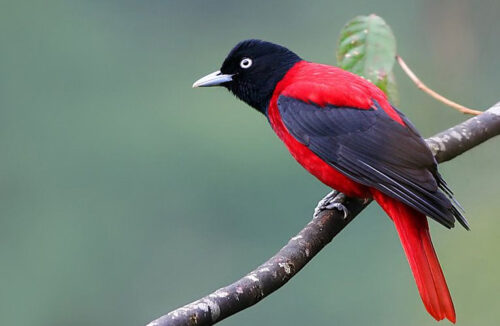
Both males and females possess similar plumage, adorned with a deep maroon body.
Their wings feature contrasting black coloration with vibrant yellow patches. A yellow eye-ring and a pointed bill complete their exquisite appearance.
Juveniles exhibit a duller coloration and lack the distinctive eye-ring, adding to the intrigue of observing their developmental stages.
- Behavior and Feeding Habits: Elusive Canopy Dwellers with Varied Diets
Maroon Orioles are often found in pairs or small family groups, displaying shy and elusive behavior.
They are most active during the early morning and late afternoon hours, spending their days perched in the forest canopy.
These birds primarily feed on insects, showcasing their role in natural pest control.
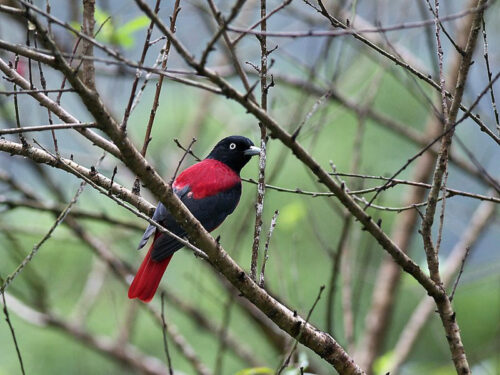
Additionally, they consume fruits and nectar, further contributing to seed dispersal and pollination.
Exploring their behavior and dietary preferences offers insights into their ecological significance.
- Conservation Concerns: Protecting the Maroon Oriole’s Habitat
While the Maroon Oriole is currently categorized as a species of least concern by the International Union for Conservation of Nature (IUCN), its survival is threatened by habitat loss and fragmentation.
Deforestation, logging activities, and agricultural expansion pose significant challenges to their delicate ecosystems.
Conservation efforts are crucial to safeguarding the Maroon Oriole and preserving the ecological balance of Southeast Asia.
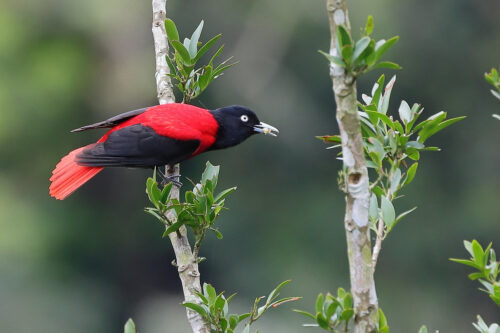
Supporting initiatives focused on habitat protection and raising awareness are essential steps towards ensuring their long-term survival.
The Maroon Oriole stands as a rare and stunning bird species that holds both visual allure and ecological importance.
With its striking appearance, elusive nature, and significant role within Southeast Asian ecosystems, it is a prized sighting for birdwatchers and nature enthusiasts.
However, the conservation of their habitats is equally vital for the overall health of the region’s biodiversity.
By appreciating the Maroon Oriole’s beauty, supporting conservation efforts, and promoting awareness, we can contribute to preserving the delicate balance of nature and ensuring a future where these enchanting birds continue to grace our forests.
Video:






